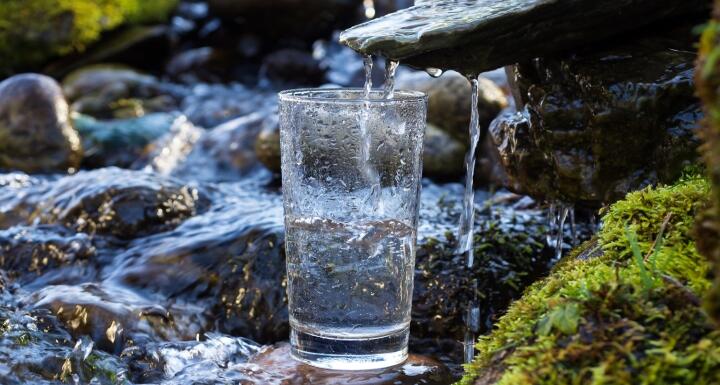Can the law that protects the quality of the nation's waters seep into groundwater below the surface?
According to the United States Court of Appeals for the Fourth Circuit, which includes North Carolina in its jurisdiction, it may have that reach. A recent decision considered facts allowing the broadened application of the Clean Water Act (the "Act") to capture groundwater as a conduit for pollutants traveling from a point source to surface water. In doing so, the decision adds to growing concern and confusion of the regulated community over whether discharges to groundwater require permits.
Surface Background
At its core, the Act prohibits the discharge of pollutants from any point source into navigable waters. The Act defines the term "discharge of pollutants" as "any addition of any pollutant to navigable waters from any point source." To comply with the Act, parties typically obtain permits allowing the discharges, within limits, through the Environmental Protection Agency's ("EPA") National Pollution Discharge Elimination System ("NPDES") Program.
Traditionally, "navigable waters" meant navigable in fact, at the very least navigable enough to paddle a kayak downstream. Through the course of legislative amendments, administrative rulemaking, and judicial decisions, it was clarified to mean "waters of the United States, including the territorial seas" – essentially any surface water body that could be conceived to involve interstate commerce.
Years of muddled interpretations frustrated the regulated public as the EPA, United States Army Corps of Engineers ("Corps"), and the United States Supreme Court tried to agree on what qualifies as a "water of the United States" subject to the Act.
The 2006 split decision of the United States Supreme Court in Rapanos v. United States resulted in the agencies' case-by-case application of now-retired Justice Anthony Kennedy's lone opinion. His "significant nexus" test extended the application of the Act to bodies of water and wetlands, some seasonally dry, which alone, or in combination, significantly contribute to the chemical, physical, and biological integrity of traditional navigable waters.
Years of unpredictability from application of the "significant nexus" test led the EPA and Corps to replace multiple guidance documents with the Clean Water Rule (the "Rule") in 2015. Immediate challenges to the Rule were filed across the country, so the United States Court of Appeals for the Sixth Circuit halted implementation of the Rule nationwide. In 2017, President Trump issued an Executive Order directing EPA and the Corps to repeal and replace the Rule.
In 2018, the Sixth Circuit withdrew its stay after the United States Supreme Court decided that federal district courts are the correct courts to originally rule on the challenges. The EPA issued an applicability date of February 2020 for the Rule, but legal challenges were filed, and on August 16, 2018, a federal district court judge in South Carolina issued an injunction. As a result, the Rule now is in effect in 26 states. Meanwhile, in June 2018, the EPA and the Corps issued a supplemental notice of proposed rulemaking to solicit additional comments on repeal of the 2015 Rule.
While substantial uncertainty continues to reign for the regulated community on what actually constitutes a "water of the United States," the Act had never been interpreted to apply to groundwater. Until now.
A Deeper Dive
In 2018, two federal appellate court decisions separately held that point source discharges to groundwater that ultimately reached surface waters could be subject to the Act. In Upstate Forever v. Kinder Morgan Energy Partners, the Fourth Circuit held that a direct discharge from a point source into navigable waters is not required to constitute a violation of the Act if there is an allegation of a direct hydrological connection between the navigable waters and the intervening groundwater. In doing so, it joined the Ninth Circuit which, in the case of Hawaii Wildlife Fund v. County of Maui, held that a direct discharge to surface water is not required to apply the Act.
Upstate Forever was a split decision on a question of the first impression before the Fourth Circuit arising out of a citizen suit. In 2014, several hundred thousand gallons of gasoline spilled into soil and groundwater from a ruptured subterranean pipeline owned by Kinder Morgan. Kinder Morgan repaired the pipeline and implemented certain remediation and recovery activities required by the South Carolina Department of Health and Environmental Control.
However, the plaintiffs alleged that not all of the gasoline was recovered and what remained continued to pass through groundwater into wetlands and tributaries of the Savannah River less than 1,000 feet away. Kinder Morgan requested dismissal on the grounds that the court did not have jurisdiction to hear the case because the pipeline was repaired and no longer discharged pollutants.
A divided panel of Fourth Circuit judges identified the issue as whether the discharge of a pollutant that moves through groundwater before reaching navigable waters may constitute a discharge of a pollutant within the meaning of the Act. The court held that although the point source – the pipeline – had been repaired and was no longer actively discharging pollutants, remnants of the original release in the groundwater migrated to hydrologically connected nearby surface water.
In the majority's analysis, while a point source of the discharge is necessary to support a theory of liability under the Act, it does not have to directly deliver the pollutant to surface water if hydrologically connected groundwater serves as the conduit.
To be clear, Upstate Forever does not hold that the Act applies to discharges to groundwater itself. There needs to be a nexus between the source of the pollution and the navigable water. In other words, where groundwater is the hydrological connection between original discharge and surface water, it must be sufficiently connected to navigable waters.
EPA Uncertainty
In reaching its decision in Upstate Forever, the Fourth Circuit considered EPA guidance to identify a clear connection between the discharge, groundwater, and navigable waters. Citing NPDES Permit Regulation and Effluent Limitation Guidelines and Standards for Concentrated Animal Feeding Operations ("CAFO Guidelines"), the court relied on EPA's interpretation that the directness of a hydrological connection is a factual inquiry in which time, distance, geology, flow, slope, and the traceability of a pollutant are considered.
Interestingly, before the Upstate Forever decision was issued, EPA was seeking input on how it should address groundwater discharge under the Act through a Request for Comment running in tandem with its pending efforts to redefine "waters of the United States" in the Clean Water Rule.
EPA guidance and policy documents besides the CAFO Guidelines opine that groundwater pass-through situations, such as seepage from wastewater ponds, may trigger NPDES requirements. Meanwhile, the United States Senate Committee on Environment and Public Works held a hearing in April 2018 about the role of states and the federal government in protecting groundwater. Meanwhile, proceedings such as Upstate Forever can proceed.
Conclusion
Many industries have a stake in the reach of the Act and how the EPA and courts resolve its application to groundwater. The potential impact could be wide-ranging, particularly in eastern North Carolina where the groundwater table is relatively shallow.
Citizen suits can target coal ash ponds and animal waste lagoons. Releases from stormwater ponds that occur during construction activities can face enforcement proceedings from the North Carolina Department of Environmental Quality if not permitted. In addition, if such ponds or activities are not properly managed, it may not matter whether a discharge is from a permitted point source or whether it's an unpermitted discharge. As the Clean Water Rule awaits its facelift, groundwater pass-through cases proceed.
The issue soon may find its way to a United States Supreme Court sitting with Justice Kennedy's successor because petitions for writ of certiorari have been filed asking the Supreme Court to review the Fourth Circuit's Kinder Morgan decision and the Ninth Circuit's Hawaii Wildlife Fund because each conflict with decisions in other federal courts of appeals throughout the country about the scope of liability under the Act. Years of uncertainty for regulated parties could change course with an unanticipated expansion of the NPDES program.









